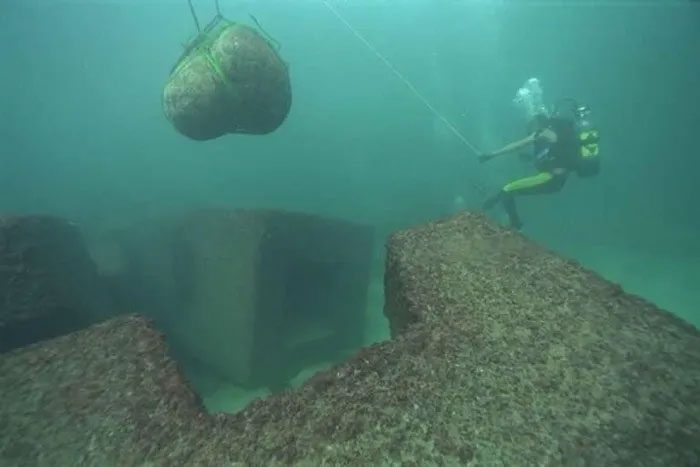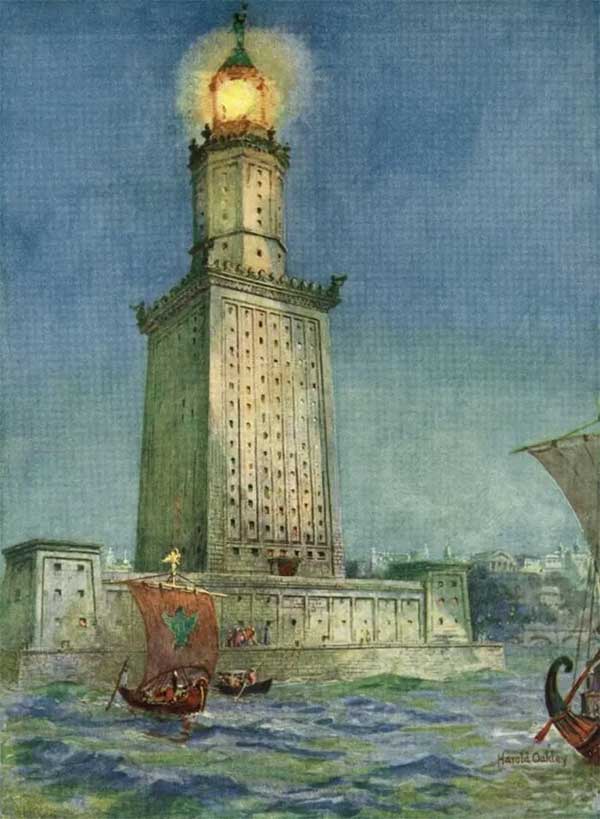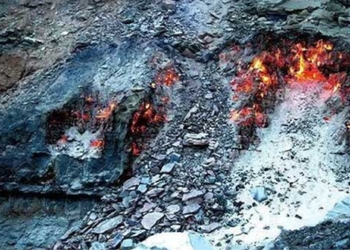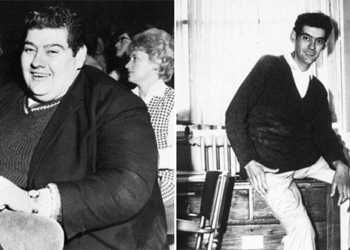As one of the Seven Wonders of the Ancient World, the Lighthouse of Alexandria stood majestically at the harbor of Alexandria, Egypt, for many centuries.
However, this magnificent structure, over 90 meters tall, ultimately crumbled and today, there are no traces left. Historians have sought the reasons behind its disappearance and discovered many intriguing details.
The Magnificent Structure

Recovery of the ruins of the world wonder lighthouse.
The idea of the Lighthouse of Alexandria emerged around the early 3rd century BC, at a time when Ptolemy – a Greek general under Alexander the Great – declared himself Pharaoh of Egypt.
Constructed on Pharos Island at the harbor of Alexandria, this structure is believed to have been designed by Sostratus of Cnidus (although he may have only been a financial backer). Its purpose was to guide ships to shore and help captains avoid obstacles at night.
While there are various estimates, it is thought that this construction took at least a decade – and possibly up to three decades – to complete. Historians suggest it remained unfinished until the reign of Ptolemy II, who ruled Egypt from 284 to 246 BC.
Upon completion, the Lighthouse of Alexandria towered over 90 meters above the harbor and was one of the tallest man-made structures on Earth at that time. The lighthouse certainly added vitality to the port city of Alexandria, which housed the tomb of Alexander the Great, the Museum of Alexandria, the Serapeum temple, and the Library of Alexandria, filled with extensive knowledge of the ancient world.
Besides its height record, the Lighthouse of Alexandria is also considered an architectural masterpiece. Most of what is known about the structure comes from the German classical archaeologist Hermann Thiersch, who lived in the 20th century.
In his 1909 work, Pharos, antike, Islam und Occident, he describes the lighthouse as being built in three tiers. The lowest tier is square, the second tier is octagonal, and the third tier is cylindrical.
Each tier slightly narrows inward, and a spiral ramp winds upward to the top, where a statue possibly depicting Ptolemy, Alexander the Great, or a Greek deity stood.
In addition to the ever-burning flame, the lighthouse was equipped with a mirror, possibly made of bronze, to reflect light out to sea. This design allowed the lighthouse to be visible from distances of up to 50 kilometers.
Over the years, the lighthouse suffered continuous damage from earthquakes and required frequent repairs, but historians’ descriptions of it largely remained consistent: it was built of light-colored stone, with an inscription honoring Zeus on the seaward-facing surface.
Between 796 and 956, several significant earthquakes occurred, causing the lighthouse to crack in various places, including the upper part, about 20 meters above the ground. Subsequently, earthquakes and tsunamis in 1303 and 1323 destroyed most of the structure, reducing it to ruins.
In 1480, the King of Egypt built a fortress within the remnants of the Lighthouse of Alexandria, erasing the last traces of this wonder.

The Lighthouse of Alexandria as described by later generations.
The Ruins of a World Wonder
According to surviving records, the Lighthouse of Alexandria first appeared in the list of world wonders in the 6th century and remained intact until the 12th century. After being ravaged by natural disasters and wars, it seemed to be forgotten over time. It wasn’t until the 20th century that archaeologists made a remarkable discovery regarding this magnificent structure.
In 1916, archaeologist Gaston Jondet discovered submerged ruins at the old Alexandria harbor. He detailed the structure, but unfortunately lacked archaeological evidence to accurately date it. By 1940, Sir Leopold Halliday Savile visited the site for research.
Archaeologists at this time believed there was some ancient structure offshore from Alexandria, but they did not know exactly what it was.
In 1968, UNESCO funded a survey of the old Alexandria harbor led by renowned archaeologist Honor Frost. Frost confirmed that Jondet’s findings were indeed real and even stated that the discovered ruins belonged to the long-lost Lighthouse of Alexandria. Unfortunately, the research had to be temporarily halted due to ongoing military conflict in the area.
It wasn’t until 1994 that archaeologist Jean-Yves Empereur, founder of the Alexandria Research Center, rediscovered the ruins of the lighthouse in the waters off Pharos Island.
The Egyptian government contracted Empereur to map and catalog anything of archaeological significance offshore from Pharos Island while preparing to construct a concrete breakwater at the site. Empereur and filmmaker Asma el-Bakri, using a 35mm camera, captured the first underwater images of the famous lighthouse ruins.
According to Smithsonian magazine, Empereur’s team recovered many parts of the ancient lighthouse, including gigantic granite blocks, 30 sphinx statues, 5 commemorative towers, and numerous columns inscribed with texts dating back to the time of Ramses II.
In total, scientists cataloged over 3,300 fragments of the lighthouse by the end of 1995, some of which were displayed in museums in Alexandria. Thus, the Lighthouse of Alexandria was given a second life.





















































